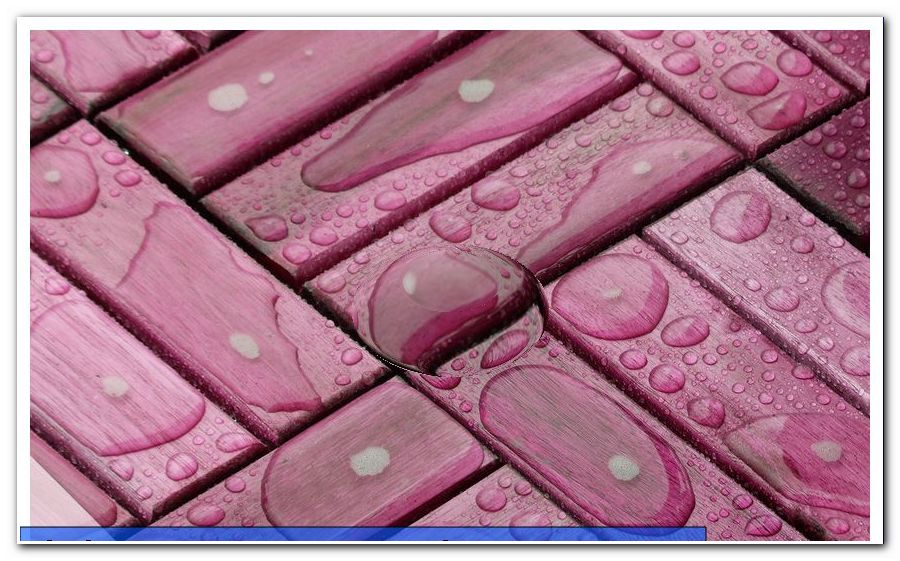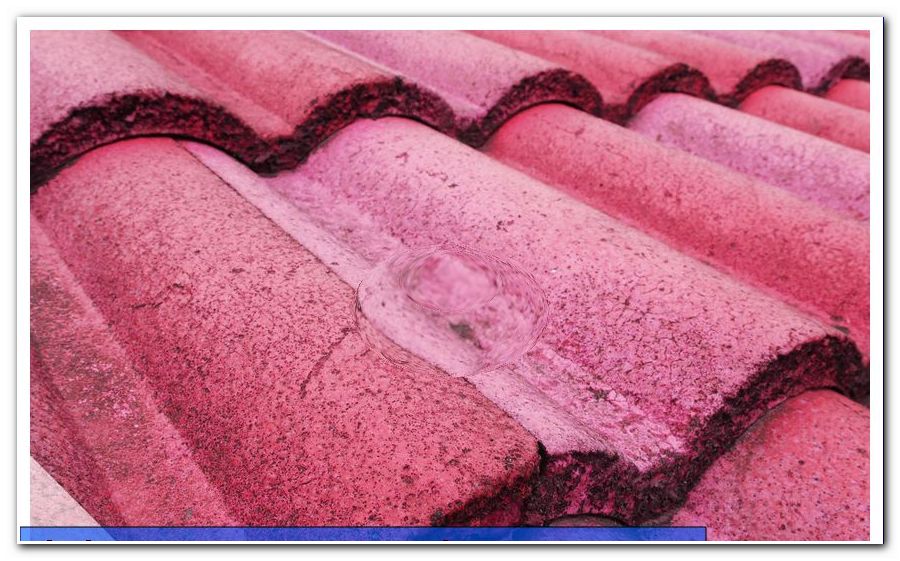Instructions: Apple tree cut yourself - apple tree cut

- When is cut "> Circular crown cut at the apple
- plant section
- education section
- preservation section
- rejuvenation pruning
An apple tree is the symbol of the fruit tree. If there is only one fruit tree in the home garden, 98 percent of it is an apple tree, the typical root and round crown. In spring, such a fruit tree shines through its flowers, in summer it provides shade and in autumn, it delivers aromatic fruits. It must be cut so that the tree develops as desired, grows well, remains healthy and delivers many apples every year.
Not every apple tree is cut the same. It always depends on what is to be achieved and how old such a tree is. There are also different growth forms, also here is cut differently. A round crown looks different, as a spindle, a columnar form or even a trellis apple. The cutting techniques are specifically geared to the trees.
A distinction is also made between the planting, the parenting, the maintenance cut and the rejuvenation cut. In the planting year, the apple tree is cut the same. Its later form is determined (round crown, hollow crown, spindle, trellis). In the following years the tree is raised. Once it has reached its final shape, the conservation cut ensures that the tree remains vital and bears plenty of apples. The rejuvenation cut helps older apple trees, which no longer bear well and have come out of shape.
When will be cut?
Apple trees are usually cut in late winter to spring. The cut stimulates the growth of the tree. It is the case that it grows stronger the earlier it is cut. This has to do with the juice pressure. When the temperatures rise towards the end of January, the juice pressure is set in motion and growth begins with all its might. This is the ideal time for the cut. If the temperatures are still in the cellar, long-lasting frost is to be expected, then should be cut only in mid-February, so there is no risk of freezing or drying.
Round crown cutting the apple
The round crown is the most common apple tree and the most classic. For a newly purchased tree, education takes between 6 and 10 years. At this time it is important to cut the wood each year. You have to know that an apple tree does not produce flowers on annual long shoots. If these are shortened to less than 15 cm, a flower is formed at the top. Most of the flowers grow on two-year long shoots, which are also occupied by one-year small side shoots, each with a flower bud. The side shoots are also called skewers. They branch out in the coming year with new flower buds. The same happens in the next few years. However, it takes only about 6 years until the so-called fruit wood loses vitality and only sporadically forms flowers. It needs to be replaced.

plant section
When buying an apple tree, make sure that the tree has a straight trunk and five to six year old shoots. From such a tree can form a good round crown. Immediately after planting, four scaffolding drives are defined. The vertical central drive is the first, in addition to three further side shoots, which ideally branch off at an angle of about 60 degrees from the central drive. All other shoots are completely removed, directly on the trunk. The remaining side shoots should be shortened by one third. It is important that the topmost bud points outward on every shoot. Only then will the extension of the drive be carried out to the outside and not into the interior of the crown next year. The middle drive is also shortened, so strong that between it and en side shoots an angle of 90 to 120 degrees arises. Especially this promotes a uniform development of all scaffolding drives.

- Only the center drive and three strong side shoots stop, all others are removed on the trunk
- Shorten side shoots by one third
- The topmost bud must always point outwards
- Shorten center drive
- The angle between tip center drive and end runner - 90 to 120 degrees. The center drive is the angular point.
education section
From the following year you have to work regularly at the Krone. Annual shoots have grown and, in addition, rivals have formed below the interfaces. In early spring, numerous shoots are now removed: all inward and vertical growing shoots and the competition drives the framework drive extension. (Usually two new shoots grow on the cut surface of the past year, one outwards and one more inwards.) The growing inward must be removed.

All scaffolding drives must again be shortened by one third, starting from the new addition. Side scaffolding drives are shortened at a height, with the last eye must face outward again. The main drive is shortened again, in the same angle. Here, however, it is important that the topmost bud of this central drive points in the opposite direction this time than in the previous year. That's the only way the middle stays straight. Should one of the tower drives be significantly weaker than the others, it is necessary to shorten all scaffold drives by half.
- Cut out internally and vertically growing shoots
- Remove competitive drives of the scaffold extension
- Let flat-growing side shoots stand
- Shorten all scaffold drives by 1/3
- If one of these shoots is significantly weaker than the others, shorten all shoots by half
- The last eye has to point outwards
- Shorten the main drive at a 90 to 120 degree angle
- His last eye must point in the opposite direction as last year
preservation section
From the 6th to the 8th year, it is time for the conservation cut. The crown is built, now it is important to keep the tree healthy and vital and to promote fruit wood. This cut is then continued, every two to three years. Also, inward or steeply growing shoots are removed so that the crown is not too dense. The frame drive extensions are no longer shortened. They are stable enough now. For this, the tips of the scaffold shoots are slimmed down so that enough light always gets into the tree's interior, otherwise the apples will not ripen. (Slimming means nothing more than removing some shoots that are too close to the long tips of the shoots.) In addition, the competitors' scaffolds have to be removed from the scaffold shoots. It is important to divert older fruit shoots that have descended to a two-year shoot with flower buds, which is located further inside the tree. He must grow diagonally upwards or outwards. The remaining side shoot forms the new shoot tip.
Fruit shoots should not get too thick. It is ideal if they are only half as thick as the scaffold shoots. If you develop too strong fruit shoots on the center drive, they should be better removed as they shade the side scaffold drives. In contrast, flat, weak and young side shoots are allowed to stand. They form the new fruit shoots.

- Remove inwards and steeply growing shoots
- In addition, cut out competition drives of scaffolding drives
- Tips of the scaffold shoots slim down
- Older fruit shoots that descend, divert to a two-year shoot with flower buds
- Remove too strong fruit shoots
- Stand flat, weak and young runners
rejuvenation pruning
Also, the rejuvenation cut is carried out in late winter or early spring, when no frost threatens. In very old and old apple trees is cut better in the summer, they often tolerate better. Most of the time the scaffolding has to be recreated because the old one is no longer or hardly recognizable. All the competition drives of the scaffold drives must be removed. Only four shoots stop, otherwise not enough light gets into the interior of the crown. Do not let it stop, even if it's hard! All steeply growing shoots must be completely cut out. They form a competition to the middle drive. The tips of the scaffolding drives must be streamlined. To overhanging brooms divert to a more inward, steeper standing young shoot. Through him, the growth direction of the scaffold drive should be continued harmoniously. Remove all inward growing and too steep shoots in the crown. Even very strong fruit shoots must be cut out. Standing young shoots that grow directly from the scaffolding., Too long fruit shoots divert to more inward standing. They must point outwards and upwards and possess flower buds. In the case of very old trees it is not uncommon for one third of the complete crown to be gone. It is important to avoid too large interfaces. They should not be larger than half the diameter of the remaining branch. For extremely unkempt and over-aged apple trees, it makes sense to carry out the rejuvenation cut in stages, ie spread over several years. First, it is gentler and secondly, growth is not so strongly stimulated.
After a strong rejuvenation cut, the tree will try to restore balance between the root and crown. At the interfaces there are a lot of young shoots. Of that, at least half to two thirds have to be removed each year. Here it makes sense to cut in the summer, because this calms the growth. Above all, too steep and inwardly growing shoots have gone. On the other hand, shoots which grow flat outwards remain standing. They are the future fruit wood and may not be shortened. After the growth of the apple tree calms down, it is enough to do a maintenance cut every two to three years.
- Create scaffolding again
- Remove all competition drives of the scaffold drives
- Only four shoots stop
- Cut out all steep shoots that are growing upwards
- Tips of the scaffold shoots slim down
- Remove all inward growing and too steep shoots
- Remove very strong fruit shoots
- Too long fruit shoots divert to more inward standing
- For strong cutting measures spread over a few years
- In the next year remove half to two thirds of the young shoots
- Cut in summer to slow down growth
- Cut out all inward and steeply growing shoots
- When growth has calmed down, perform maintenance cuts every two to three years
Details and detailed instructions on how to cut your spindle, trellis or columnar tree so that it retains its shape can be found here: //www.zhonyingli.com/apfelbaum-in-form-schneiden/




